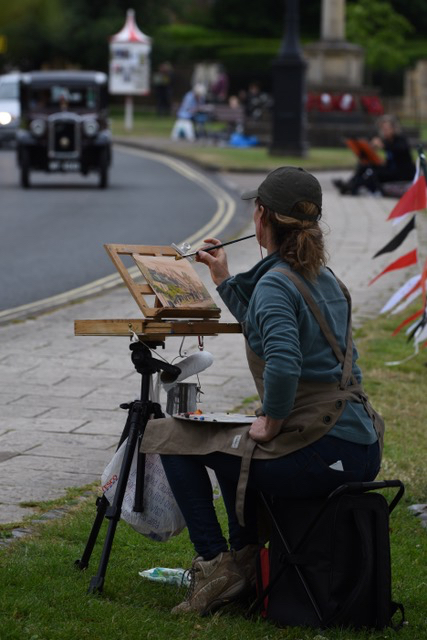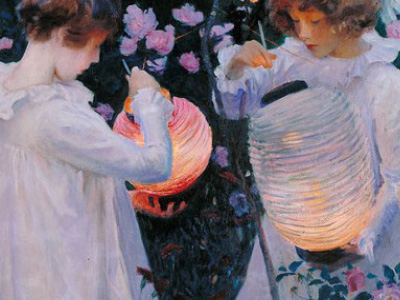
Great Broadway Paint Off

Broadway Tower

John Singer Sargent RA Carnation, Lily, Lily, Rose painted in Broadway, the Cotswolds © Tate London 2009
A Destination for Artistic Endeavour and Education
Broadway Arts Festival is a biennial celebration of this beautiful Cotswold village’s unique artistic heritage and its enduring relationship with a world-famous colony of American artists and writers, who visited and worked here in the late 19th century.
The festival, which is a charity, was started in 2010 and aims to raise awareness of the community’s rich links with the arts, whilst broadening the appeal of Broadway locally, nationally and internationally, as a destination for artistic endeavour and education. The charitable aim is to encourage an educational arts legacy in the form of our local primary and secondary schools outreach programme and student bursaries for those pursuing a career in the Arts. The festival is creating a sustainable environment within which to inspire, educate, encourage and support Broadway as an internationally recognised centre for the arts.
Heritage
The historic Worcestershire village of Broadway sits on the edge of the North Cotswolds. Its golden limestone houses and cottages line the main street either side of its largest building, now the Lygon Arms Hotel. The Lygon family (later the Earls Beauchamp) was one of the many families in Broadway’s past who were responsible for creating and supporting its rich and diverse artistic heritage.
It was the 6th Earl of Beauchamp’s generosity and foresight that helped the Guild of Craftsmen move from London to the North Cotswolds, where the ideals of the Arts&Crafts movement were nurtured and put into practice. Consequently many of Broadway’s houses and gardens were built or altered during this time, by such talents as Prentice, Jewson, Bateman and Parsons, incorporating the ideals of the movement by embracing nature and traditional craftsmanship.
William Morris, one of the key figures in the Arts & Crafts movement, adopted Broadway Tower as his studio during the 1880s, and encouraged Alfred Parsons RA to visit Broadway with his friends, including the American journalist, Lawrence Dutton. The short walk down Fish Hill from the Tower to the village was all it took to entice them to settle in Broadway, and a colony of artists, several of them American, soon followed. Francis Davis Millet, Edwin Austin Abbey RA, John Singer Sargent RA, George Henry Boughton RA, Edwin Howland Blashfield and Frederick Barnard all made Broadway their summer creative retreat. Frank Millet rented Farnham House, where in 1885 his friend John Singer Sargent started his iconic painting Carnation, Lily, Lily, Rose. The work was completed in 1886 in the grounds of nearby Russell House, where the mediaeval Abbot’s Grange had been converted into studios.
Writers, poets and performing artists were also drawn to the village. Henry James, E V Lucas and Edmund Gosse were captivated by the spirit of Broadway and felt that here they had discovered ‘Old England’. Mary Anderson (the first American actress to play Rosalind at Stratford upon Avon) was so taken with the village that she and her husband, Antonio de Navarro, bought Court Farm. Their celebrity status brought many more artistic types to Broadway, and with musician Maude Valerie White living next door in Bell Farm, intimate concerts and composing were encouraged at the top end of the High Street. Edward Elgar, another Worcestershire great who was given Lygon ‘encouragement,& also found its quiet cottages and meadows inspirational.
Broadway has many fascinating stories to tell of its creative past, including J M W Turner sketching en route to Evesham, Alma Tadema and Evelyn Waugh enjoying the Lygon Arms, J M Barrie playing cricket on the village green, German prisoners of war painting delightful pictures of Broadway on discarded pieces of wood, and Sir Gordon Russell producing his iconic furniture. The tradition has been kept alive by the art galleries and antique shops which have for years lined the High Street. Today artists still live and work in the village, ensuring that Broadway’s continuing influence and involvement with the Arts is in safe hands.


